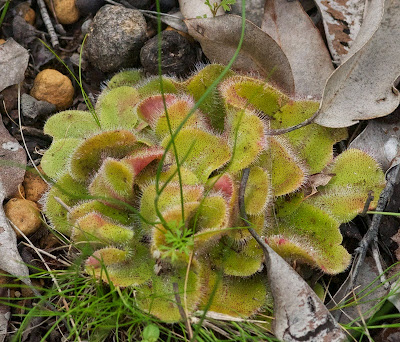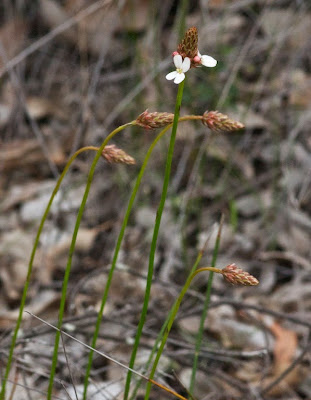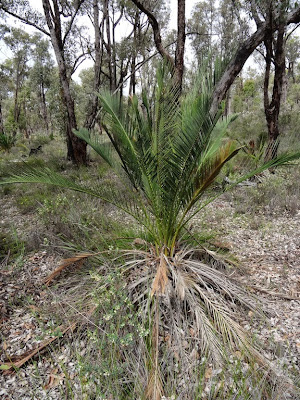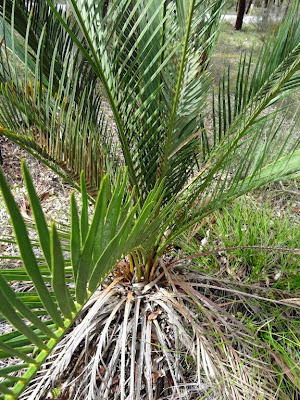Dryandra Woodlands was our last major stop on our swing through the southwest of Australia south of Perth; from there, on September 14, 2013, it was back to the capital to meet our wildflower-watching companions for our second leg, trip northward to the even richer flower areas to the north. We did take one brief detour, a side trip to the attractive little colonial town of York (to give Eileen a little break from nature).
From York we headed pretty much directly back to Perth. The road took us through the northern part of the Avon River Valley, a lovely stretch of eucalyptus woodland particularly rich in flowers.
In my case, that meant photographing everything I could in the (frequently vain) hope that I would be able to identify the plants I photographed later. This is emphatically not the way to botanize, but with limited time, in a flora and as diverse as this one, it was the best way to maximize my flower-watching opportunities.
Many of the flowers along the roadside were ones we had already seen on our spin through the southwest. Kick Bush (Astroloma pallidum), a member of the heath family (Ericaceae), was a novelty.
Blue Leschenaultia (Leschenaultia biloba) we had seen before, but the carpets of these electric-blue flowers remained an arresting sight.
Almost as brilliant was Blue Squill (Chamaescilla corymbosa), a flower we saw on our first day in the karri forests.
The long white hairs on its stems identify this as Bristly Cottonhead (Conostylis setigera), a flower we had found in plenty at the Stirling Range Retreat a few days before.
I had already photographed the nodding heads of Purple Tassels (Sowerbaea laxiflora), but here, instead of a cluster of buds, the open flowers themselves were on display.
Patersonia is a genus we found on our way to Albany, but whether this is the same species as the one I photographed further south I cannot say.
White Candles (Stackhousia monogyna) we had seen (and would continue to see) almost everywhere.
The same is true for the genus Hibbertia, in one form or another. Yellow Buttercups (Hibbertia hypericoides) may not have been a species we had found earlier, but by now its flowers, so similar to others in its genus, were familiar and recognizable.
Equally familiar were Cowslip Orchids (Caladenia flava), certainly the most common and widespread of the orchids we had seen during our first week in the west.
Many of the flowers along the roadside were ones we had already seen on our spin through the southwest. Kick Bush (Astroloma pallidum), a member of the heath family (Ericaceae), was a novelty.
Blue Leschenaultia (Leschenaultia biloba) we had seen before, but the carpets of these electric-blue flowers remained an arresting sight.
Almost as brilliant was Blue Squill (Chamaescilla corymbosa), a flower we saw on our first day in the karri forests.
The long white hairs on its stems identify this as Bristly Cottonhead (Conostylis setigera), a flower we had found in plenty at the Stirling Range Retreat a few days before.
I had already photographed the nodding heads of Purple Tassels (Sowerbaea laxiflora), but here, instead of a cluster of buds, the open flowers themselves were on display.
Patersonia is a genus we found on our way to Albany, but whether this is the same species as the one I photographed further south I cannot say.
White Candles (Stackhousia monogyna) we had seen (and would continue to see) almost everywhere.
The same is true for the genus Hibbertia, in one form or another. Yellow Buttercups (Hibbertia hypericoides) may not have been a species we had found earlier, but by now its flowers, so similar to others in its genus, were familiar and recognizable.
Equally familiar were Cowslip Orchids (Caladenia flava), certainly the most common and widespread of the orchids we had seen during our first week in the west.
We found yet another of the seemingly innumerable Australian poison-peas, this one appropriately named Bacon-and-Eggs (Gastrolobium linearifolium, assuming as always that I have identified correctly).
This is either Red-ink Sundew (Drosera erythrorhiza) or one of its flat-leaved, somewhat bladderwort-like relatives.
Here is another of the many species of trigger flower; perhaps Stylidium scariosum.
The hard, dry fruits of a Eucalyptus, or of one of its close relatives, littered the ground.
The hard, dry fruits of a Eucalyptus, or of one of its close relatives, littered the ground.
As always, there were many plants that I couldn't identify. This is certainly a member of the Myrtaceae, but I don't know which one.
This could be a species of Trymalium, an Australian endemic genus in the buckthorn family (Rhamnaceae).
In the shrub layer was another of the dryandras, the Pingle (Banksia squarrosa).
Amid the native flowers there were, of course, alien weeds, including various daisy relatives (Asteraceae) and Onion Grass (Romulea rosea), a South African member of the Iris family.
Although this was supposed do be a wildflower trip, and the flowers were the first things to catch our eye as we drove through the valley, the plant that interested me the most was not a flowering plant at all. Macrozamia riedlei, though it looks like some sort of palm, is a cycad, a member of a group of cone-bearing plants that has been around since the Jurassic at least. Cycads interest me not only because they are ancient (though they certainly are: dinosaurs wandered among plants like these), but because they are in considerable peril these days from poachers and unscrupulous collectors who pay them. This is particularly true of the African cycads; the Australian species are protected by national laws.








%2BDSC_1529.jpg)
%2BDSC_1530.jpg)
%2BDSC_1499.jpg)
%2BDSC_1497.jpg)
%2BAsparagaceae%2BDSC_1539.jpg)
%2BDSC_1555.jpg)
%2BDSC_1515.jpg)
%2BDSC_1545.jpg)


%2BDSC_1514.jpg)
%2BDSC_1504.jpg)
%2BDSC_1505.jpg)
%2BDSC_1533.jpg)
%2BDSC_1500.jpg)






%2BDSC_1517.jpg)






No comments:
Post a Comment